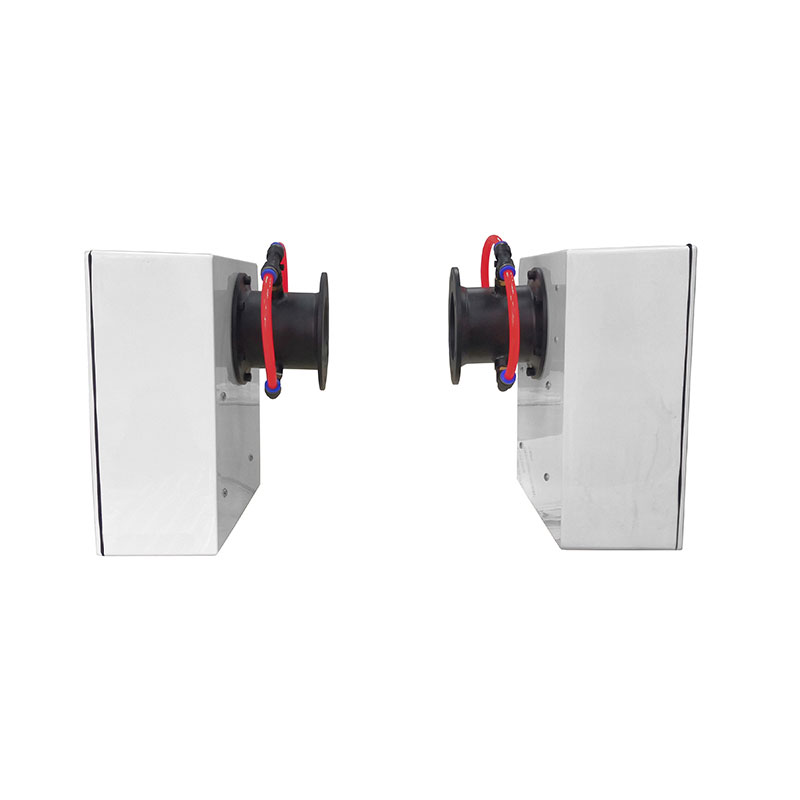Tianqiong Sensor IOT Technology Co., Ltd
Sales Manager:Ms. Emily Wang
Cel,Whatsapp,Wechat:+86 15898932201
Email:info@fengtutec.com
Add:No. 155 Optoelectronic Industry Accelerator, Gaoxin District, Weifang, Shandong, China

Sales Manager:Ms. Emily Wang
Cel,Whatsapp,Wechat:+86 15898932201
Email:info@fengtutec.com
Add:No. 155 Optoelectronic Industry Accelerator, Gaoxin District, Weifang, Shandong, China

Model:FT-YGT1
Brand:tianqiong
1.Light Transmittance Meter measurement principle
Light Transmittance Meter is used to measure the light transmittance (or light opacity) and dust concentration of the flue and provide accurate measurement results.The detection light crosses the flue, and is a single optical path measurement system, consisting of two parts: a transmitter and a receiver.A high-brightness LED light source is installed in the transmitter.It emits the light beam through the diffuser and passes through the flue, projected onto the focus lens in the receiver and is focused on the measurement detector; the other part is directly focused on the reference detector.By calculating the ratio of signal intensity obtained on the two detectors, the light transmittance or light opacity value can be obtained, thereby obtaining the light transmittance (or light opacity) and the dust concentration value.
2.Main features of Light Transmittance Meter
Direct continuous measurement
Small size, light weight and compact structure
Directly display light transmittance or opacity
Pollution monitoring and compensation device with lens
Automatic calibration and manual calibration, convenient and flexible
Measurement path 0.5-5 meters
With air purge path
Long life LED signal light source
No moving parts – small maintenance
Easy to install and debug
3.Light Transmittance Meter Technical Parameters
| How it works | Crossing the flue, single-light transmission |
| light source | High brightness LED |
| Response time | 98% of the final value is reached in 3 seconds |
| Measurement range | Light transmittance 0-99.99% |
| Resolution | 0.01% |
| Detectable gases | Smoke, smoke or related dust gases |
| Light path length | 0.3-2 meters standard type (other lengths can be customized) |
| Average time | 1-59 seconds |
| Calibration and calibration | Manual calibration and calibration (with calibrator) |
| show | LCD LCD display |
| Analog output | 4-20mA current ring |
| Digital output | RS485/232 |
| Relay output | Two-way switching output (alarm value setting) |
| Operating temperature | -20-50°C |
| Working humidity | 0-99% (no condensation) |
| Power supply voltage | 220VAC; 12, 24VDC optional |
| Power consumption | The maximum transceiver system is 18W |
| vibration | 2Hz-60Hz, maximum amplitude 2mm |
| Housing material | Die-cast aluminum |
| Protection level | IP67 |
The Handheld Weather Station is a portable meteorological observation instrument that integrates multiple meteorological element monitoring functions, and the FT-SQ5A is a typical representative of it. It uses precise sensors and intelligent chips, and can accurately measure five meteorological elem...
In the field of photovoltaic power generation, accurate environmental data monitoring is crucial for improving power generation efficiency, and all of this is inseparable from reliable professional equipment.The Photovoltaic Weather Station FT-WQX8B is a comprehensive environmental monitoring device...
The EL series of DC power supply is an important equipment in the testing link of the photovoltaic industry.It is specially used to provide power support for EL (Electroluminescence) testing of photovoltaic modules. In the production process of photovoltaic modules, EL testing is a key means to dete...
Urban waterlogging is an invisible "underground threat".In recent years, extreme rainfall events have occurred frequently, and many cities have suffered severe waterlogging. News of traffic paralysis, flooded vehicles, and trapped residents are not uncommon, which not only seriously affect...